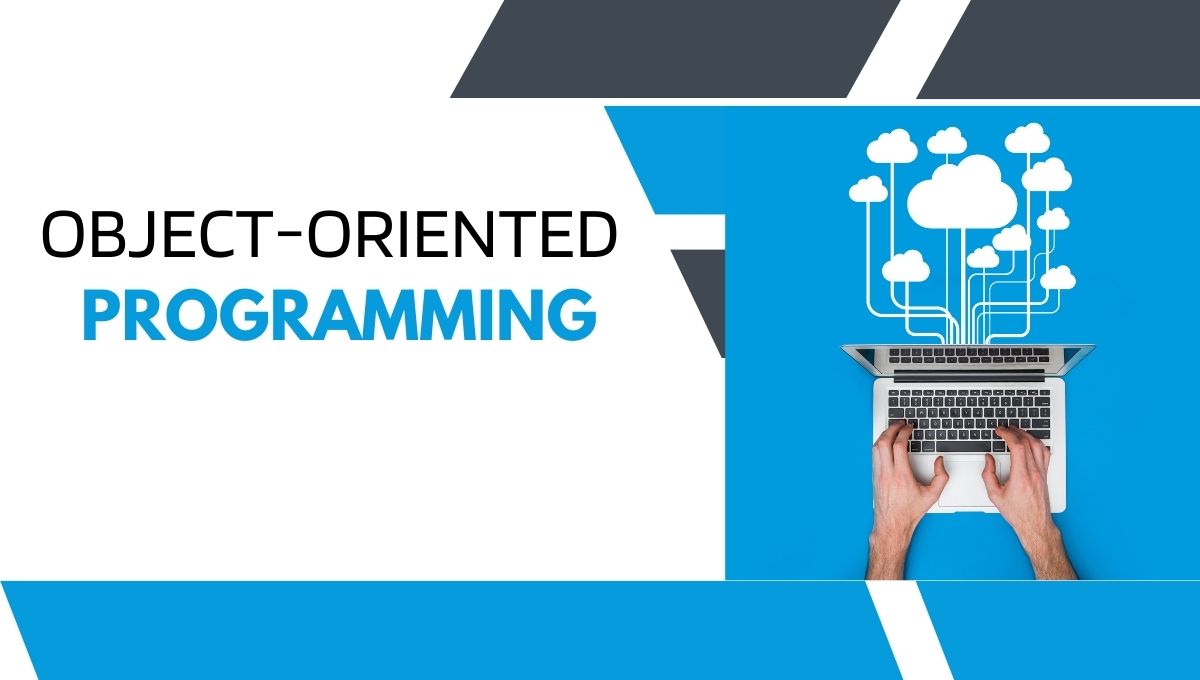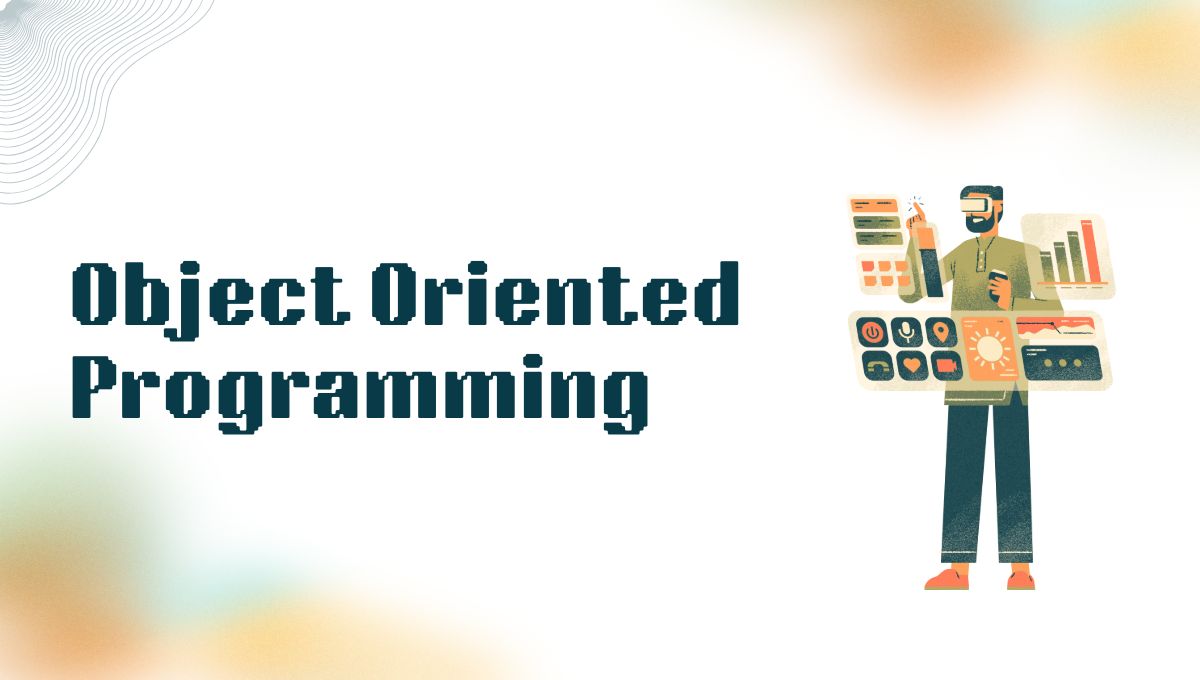A computer programming model that organises software design around data or objects rather than functions and logic is known as Object oriented programming- abbreviated as OOP. Well, an object can be defined as a data field that has unique attributes and behaviour.
Object-oriented programming focuses on the objects that developers would want to manipulate without applying logic. Honestly, this programming approach is suited for software that is large, complex or requires frequent updates and maintenance.
Thus, it is majorly used in manufacturing and design and mobile applications. For example, Object Oriented Programming can be used for manufacturing system simulation software.
The object oriented programming method is beneficial for collaborative development, where actually the projects are divided based on the groups. Some of the additional benefits of object oriented programming include:
- Code Reusability
- Scalability
- Efficiency
The very first step in object oriented programming is to collect all the objects a programmer desires to manipulate and identify how they are related to each other. Well, this is popularly known as data modeling.
For example of object can be from a physical entity- like a human being who is associated by properties like name, and address to small computer games like widgets.
A once-known object is assigned to a class of objects. The class of objects indicates the kind of data held and all logic sequences capable of manipulating it. There exist different distinct logic sequences in each method. Objects are able to communicate through a well-defined interface referred to as a message.
What are the basics of object-oriented programming?
Here are the 4 basics of object-oriented programming:
| Classes | Objects | Methods | Attributes |
- Classes- A user-defined data type that precisely acts as a blueprint for each object, attribute and method.
- Objects- Instances of a class created specifically to define the data. This can be real-world objects or some abstract entity. Initially, when the class is defined the description is the only object that is defined.
- Methods- These are the functions that objects can perform. It is defined inside a class and it describes the behaviour of an object. Each method contained in class definitions starts with a reference to an object. Additionally, instance methods are the subroutines contained in an object. Methods are used by programmers for reusability or to keep functionality encapsulated inside one object at a time.
- Attributes- It represents the state of an object. It also means that these are the characteristics that distinguish classes. Data is stored in the attributes field in the object. Class attributes belong to the class itself and are also defined by the class template.
What are the main principles of OOP?
Object-oriented programming is based on the following principles:
- Encapsulation: This principle of OOP states that all the important information is stored inside an object and only selected information is revealed. This implementation and state of individual objects is privately held inside a defined class. In this case, other objects do not have access or authority to make changes in this class. And since they do not have access to authority to make changes they are only able to call a list of public functions or methods. This feature of data hiding provides greater program security and avoids unintended data corruption.
- Abstraction: The internal mechanisms are shown by objects only in case of use for other objects. The unnecessary implementation code will be hidden in this way. The derived class can have its functionality extended. This concept can help developers more easily make additional changes or additions over time.
- Inheritance: Another principle of OOP is Inheritance. This is classes can inherit code and properties from other classes. Relationships and subclasses between objects can be assigned, enabling developers to reuse common logic, while still maintaining a unique hierarchy. Inheritance forces more thorough data analysis reduces development time and ensures a higher level of accuracy.
- Polymorphism: Objects are built to share behaviours, and they can be in more than one form. The program determines which meaning or usage is required for each execution of that object from a parent class reducing the need to duplicate codes. A child class then gets created, which expands the functionality of the parent class. It allows different types of objects to pass through the same interface.
- Syntax: It is nothing but a set of rules that describe the arrangement of words and punctuation in a programming language. Syntax is also one of the important principles of OOP.
- Coupling: This describes the extent to which different software elements are interrelated. For instance, given that a class has attributes change, then another coupled class also changes.
- Association: This is the link between one or more classes. These associations can be one-to-one, many-to-many, one-to-many or many-to-one.
What are the benefits of OOP?
Benefits of OOP include the following:
- Modularity- Objects can be encapsulated as self-contained, thus helping in troubleshooting and collaborative development.
- Reusability- Code can be reused via inheritance, thus a group of people do not need to write the same code several times.
- Productivity- Programmers can assemble new programs fast through many libraries and reusable code
- Independent- Easily upgradable and scalable. Programmers can implement system functionalities independently.
- Interface descriptions- Due to message passing techniques, external systems description is straightforward.
- Security- Because of encapsulation and abstraction, complicated codes are masked; it will be easy to maintain a software application, as internet protocols will be masked from being disturbed.
- Flexibility- There is an adaption capability from polymorphism which would result in one function accepting a single class into its placement while passing objects through one interface.
- Code maintenance- A system can be updated and maintained without requiring a great deal of adjustment.
- Low cost- Other benefits of OOP, including its maintenance and reusability, is it reduces the development costs.
What are examples of object oriented programming languages?
While Simula is the first object oriented programming language to be credited, many other programming languages are used with OOP today. But some programming languages go well with OOP than others. For instance, programming languages that are considered pure OOP languages treat everything as objects. Other programming languages are designed mainly for OOP but with some procedural processes included. Some of the most popular programming languages are designed for, or with, OOP in mind.
For example, the following are some of the very popular pure OOPs languages:
- Ruby
- Scala
- JADE
- Emerald
Programming languages whose design is primarily based on OOPs include:
- Java
- Python
- C++
Other programming languages used with OOPs include:
- Visual Basic.NET.
- PHP
- JavaScript
FAQs
FAQ 1: What is the main advantage of using Object-Oriented Programming (OOP)?
The main advantage of OOP is its ability to enhance code reusability, scalability, and maintainability. By organizing code into objects, OOP allows developers to easily modify or update specific sections of the code without affecting the entire system, making it ideal for large, complex applications.
FAQ 2: Which programming languages are best for learning Object-Oriented Programming?
Some of the best programming languages for learning OOP include Java, Python, C++, Ruby, and Scala. These languages support OOP principles like encapsulation, inheritance, and polymorphism, and are widely used in both academic and industry settings.
Conclusion:
Object-Oriented Programming has revolutionised the way software is developed. It provides modularity, scalability, and efficiency through principles like encapsulation, inheritance, and polymorphism. With such versatility, OOP has remained a basis for developing secure, maintainable, and adaptive software solutions across industries. Popular languages such as Java, Python, and C++ show their lasting relevance in building complex applications.
Elevate your career with our Data Analytics Course, meticulously designed to provide a strong foundation in programming concepts, including OOP, and equip you with in-demand tools like Python, SQL, and Tableau. Through hands-on projects and real-world applications, this program helps you master the skills needed to excel as a data professional. With 100% Job Assurance, it’s your pathway to unlocking endless opportunities in the ever-evolving data-driven world.
To know more about the program, check out the entire video here


